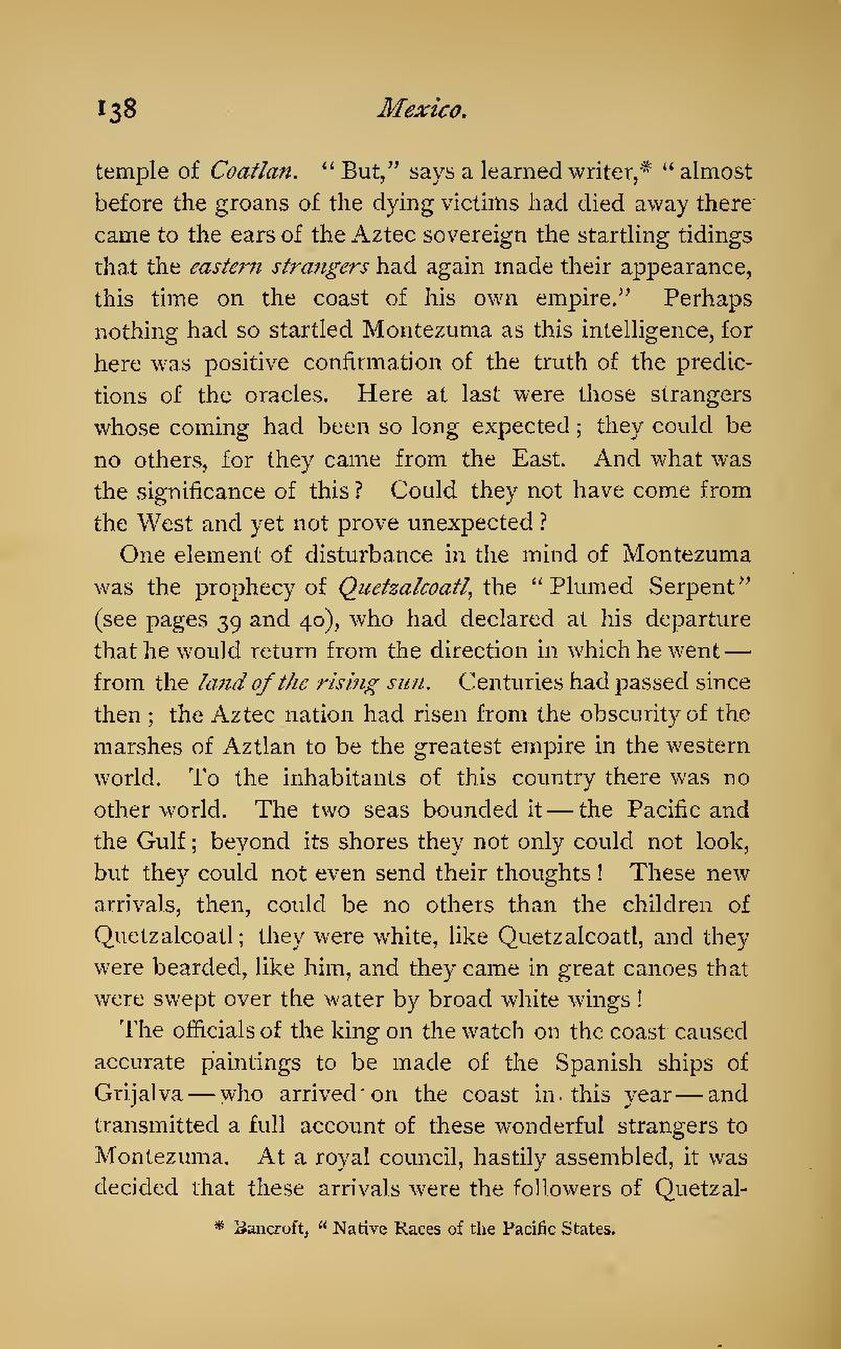temple of Coatlan. "But," says a learned writer,[1] "almost before the groans of the dying victims had died away there came to the ears of the Aztec sovereign the startling tidings that the eastern strangers had again made their appearance, this time on the coast of his own empire." Perhaps nothing had so startled Montezuma as this intelligence, for here was positive confirmation of the truth of the predictions of the oracles. Here at last were those strangers whose coming had been so long expected; they could be no others, for they came from the East. And what was the significance of this? Could they not have come from the West and yet not prove unexpected?
One element of disturbance in the mind of Montezuma was the prophecy of Quetzaloatl, the "Plumed Serpent" (see pages 39 and 40), who had declared at his departure that he would return from the direction in which he went—from the land of the rising sun. Centuries had passed since then; the Aztec nation had risen from the obscurity of the marshes of Aztlan to be the greatest empire in the western world. To the inhabitants of this country there was no other world. The two seas bounded it—the Pacific and the Gulf; beyond its shores they not only could not look, but they could not even send their thoughts! These new arrivals, then, could be no others than the children of Quetzalcoatl; they were white, like Quetzalcoatl, and they were bearded, like him, and they came in great canoes that were swept over the water by broad white wings!
The officials of the king on the watch on the coast caused accurate paintings to be made of the Spanish ships of Grijalva—who arrived on the coast in. this year—and transmitted a full account of these wonderful strangers to Montezuma. At a royal council, hastily assembled, it was decided that these arrivals were the followers of Quetzal-
- ↑ Bancroft, "Native Races of the Pacific States.
